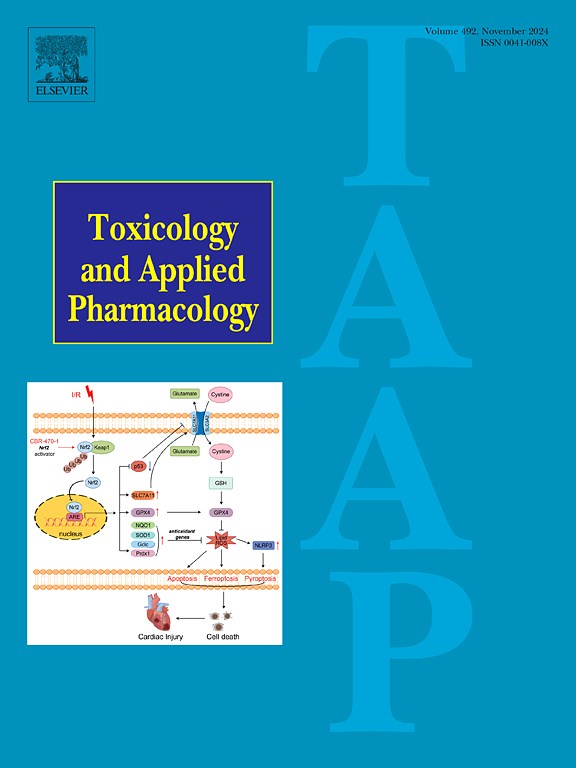Proline betaine facilitates angiogenesis in bronchopulmonary dysplasia
IF 3.3
3区 医学
Q2 PHARMACOLOGY & PHARMACY
引用次数: 0
Abstract
Background
Bronchopulmonary dysplasia (BPD) is prevalent and severe diseases in preterm infants, characterized by abnormal lung development. This study aims to investigate the therapeutic potential of proline betaine, a natural alkaloid recognized for its vasculo-protective and anti-inflammatory properties, in BPD model.
Methods
Network pharmacology was utilized to predict the targets of proline betaine and BPD-related genes (BPD-RGs). In vitro, HUVECs were treated with proline betaine to evaluate its effects on proliferation and angiogenesis. In vivo, a hyperoxia-induced BPD rat model (85 % oxygen, first day to 14th day) was used to evaluate the effects of proline betaine on pulmonary injury, angiogenesis and fibrosis.
Results
We identified a total of 100 proline-betaine targets and 825 BPD-RGs, with 20 shared targets between them. These shared targets modulated inflammation, immune response, hypoxia, and vascular homeostasis, especially the vascular phenotype. In vitro, proline betaine significantly enhanced the activity, number of tubes, and capillary length of HUVECs. The pro-angiogenic effect of proline betaine on HUVECs was dose-dependent. The hyperoxia-induced BPD rat model corroborated these findings. In vivo, proline betaine increased the radial alveolar count and reduced the mean linear intercept and collagen content in the lung. Mechanistically, proline betaine upregulated VEGF and VEGFR2 expression as well as MEK/ERK pathway activity. Notably, blocking the VEGFR2 and MEK/ERK pathways made proline betaine less effective as a medicine.
Conclusion
Proline betaine enhances angiogenesis and mitigates pulmonary injury through the MEK/ERK pathway. These findings suggest that proline betaine could serve as a novel therapeutic strategy for managing BPD in neonates.
背景:支气管肺发育不良(BPD)是早产儿中普遍存在的严重疾病,其特点是肺发育异常。本研究旨在探讨脯氨酸甜菜碱在 BPD 模型中的治疗潜力:方法:利用网络药理学预测脯氨酸甜菜碱和 BPD 相关基因(BPD-RGs)的靶点。在体外,用脯氨酸甜菜碱处理 HUVECs,以评估其对增殖和血管生成的影响。在体内,使用高氧诱导的 BPD 大鼠模型(85% 氧,第 1 天至第 14 天)评估脯氨酸甜菜碱对肺损伤、血管生成和纤维化的影响:结果:我们共发现了100个脯氨酸甜菜碱靶点和825个BPD-RGs,其中有20个靶点是共享的。这些共享靶点可调节炎症、免疫反应、缺氧和血管稳态,尤其是血管表型。在体外,脯氨酸甜菜碱能显著增强 HUVECs 的活性、管数量和毛细血管长度。脯氨酸甜菜碱对 HUVECs 的促血管生成作用呈剂量依赖性。高氧诱导的 BPD 大鼠模型证实了这些发现。在体内,脯氨酸甜菜碱可增加肺泡径向数量,减少平均线截距和肺胶原含量。从机理上讲,脯氨酸甜菜碱可上调血管内皮生长因子和血管内皮生长因子受体2的表达以及MEK/ERK通路的活性。值得注意的是,阻断 VEGFR2 和 MEK/ERK 通路会降低脯氨酸甜菜碱的药效:结论:脯氨酸甜菜碱通过 MEK/ERK 通路促进血管生成并减轻肺损伤。这些研究结果表明,脯氨酸甜菜碱可作为治疗新生儿BPD的一种新型治疗策略。
本文章由计算机程序翻译,如有差异,请以英文原文为准。
求助全文
约1分钟内获得全文
求助全文
来源期刊
CiteScore
6.80
自引率
2.60%
发文量
309
审稿时长
32 days
期刊介绍:
Toxicology and Applied Pharmacology publishes original scientific research of relevance to animals or humans pertaining to the action of chemicals, drugs, or chemically-defined natural products.
Regular articles address mechanistic approaches to physiological, pharmacologic, biochemical, cellular, or molecular understanding of toxicologic/pathologic lesions and to methods used to describe these responses. Safety Science articles address outstanding state-of-the-art preclinical and human translational characterization of drug and chemical safety employing cutting-edge science. Highly significant Regulatory Safety Science articles will also be considered in this category. Papers concerned with alternatives to the use of experimental animals are encouraged.
Short articles report on high impact studies of broad interest to readers of TAAP that would benefit from rapid publication. These articles should contain no more than a combined total of four figures and tables. Authors should include in their cover letter the justification for consideration of their manuscript as a short article.

 求助内容:
求助内容: 应助结果提醒方式:
应助结果提醒方式:


